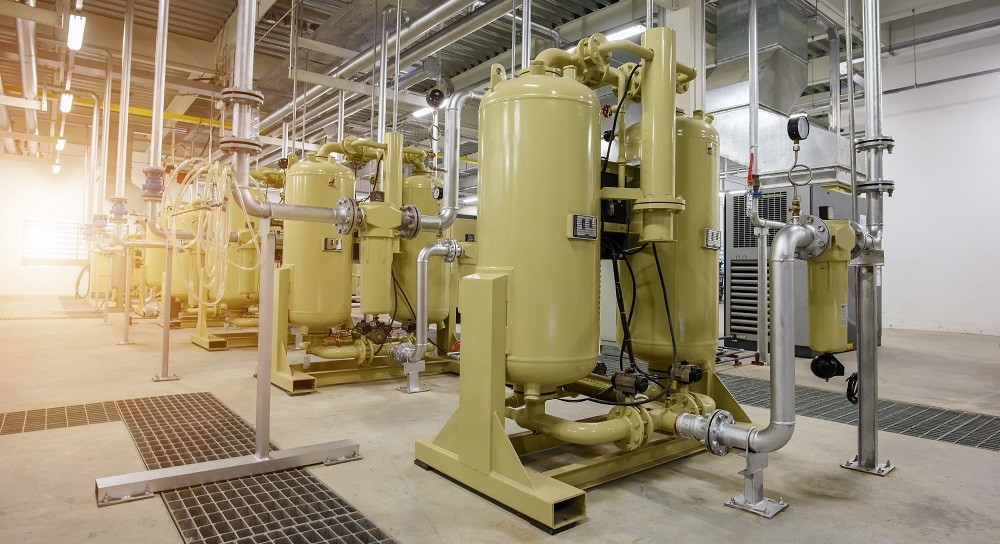Compressed air is the invisible backbone of industry, critical to a huge number of tasks in industrial operations. But, as an asset that can literally float away, compressed air systems require careful monitoring and maintenance. The simple fact is leaks happen. Most utility system managers and technicians know this. The problem is that they lack the tools to understand the scope of the problem, find and fix leaks, and set up systematic monitoring and maintenance after repairs.
Compressed air leaks quickly add up
So, if you manage a site that uses compressed air, what might you be losing day-by-day, year-by-year? Even one tiny leak of 0.8mm causes losses of over 20,000 meters cubed per year, which translates to roughly 2,000 RMB (or 250 euro). This may sound small, but the scope of the problem is usually much bigger than one leak. Typically, sites that have never implemented a compressed air leak management program will find hundreds of leaks during the initial audit.
On average, sites without compressed air leak management can expect to lose 20-50% of their air per year. What happens when 50% of this valuable utility is floating away every minute? The system compensates, consuming even more energy to make up for the loss. Overproduction adds up fast and causes pain where businesses can least afford it: C02 production and energy costs.
What causes compressed air leaks?
Before looking at how to manage leakage, it is worth exploring why leaks develop in the first place. Leaks most often occur at joints, connection points and end-use applications for two main reasons.
Material factors
The quality of equipment and materials matters. Attempting to save money upfront by choosing cheaper components, such as joints, hoses and valves will lead to leaks later. Depending on the equipment and materials, deterioration may occur at a different rate of speed with different maintenance pain points. Without a leak management system, it is impossible to find every weak point.
Procedural factors
Many leaks also arise from improper installation, application and operational use. Equipment that is not in use, for example, can be a source of leaks if it is not isolated with a valve during non-operational hours. Misuse, over-pressurization and pressure drops can all also contribute to wasted energy in the air-compressor system. Proper use, monitoring and regulation of the system are integral to preventing compressed air leaks. As is one other major factor: maintenance.
Fixing compressed air leaks: fast turnaround, long-lasting value
One of the biggest advantages of compressed air leak management is a short initial setup time and a quick ROI (less than a year in most cases). Advances in software allow audits and retrofits to be implemented by a small team in a short period. Depending on the size and complexity of a compressed air system, assessments can be completed in as little as one day.
Once assessments are made, then technicians can get to work making repairs. Sometimes this may include replacing improper materials or re-installing certain equipment, addressing the material and procedural mistakes mentioned earlier. Once repairs are completed, site managers still need to ensure continuous improvement. Thankfully, leak management software can also be used to continuously optimize performance through monitoring and analysis. With the proper audit, retrofit and optimization, leaks should stay under 5-10%, the mark of a well-maintained compressed air system.
How much money and carbon do compressed air leaks generate?
If you have any doubts about the financial and environmental benefits of compressed air leak management, let the numbers speak for themselves. Imagine, for instance, you manage a factory without compressed air leak management. You might be seeing a leakage rate of 30%, the average rate for sites that are not managing leaks. Here is what that costs your business every year in terms of money and added CO2 production.
| Compressor capacity | Cost | CO2 (tons) |
| 250 KW | 507,000 RMB | 230 |
| 500 KW | 10 million RMB | 920 |
| 1000 KW | 208 million RMB | 4,600 |
So you’ve fixed your leaks – now what?
One thing to remember is that even the best fixes must be accompanied by a good follow-up plan. Ongoing maintenance and monitoring are critical to achieving the financial/environmental savings shown above. The best solution not only finds and plugs leaks, but it should also leave you better equipped to monitor and manage future leaks. There are various paths to achieving this, but you don’t have to go it alone.
Today in Asia, new energy management models are gaining in popularity. Solutions such as Energy as a Service (EaaS) contracts make it easier for companies to outsource energy management and maintenance to a trusted partner.
Depending on your company’s financial and environmental commitments, another question to consider after you’ve addressed initial leakage problems is your longer-term strategy for compressed air equipment at your site. There is no one-size-fits-all solution here, and depending on the precise situation at your facility, you may choose to:
- Optimize the performance of your existing equipment through a blend of preventive and predictive maintenance, backed by leak-monitoring software.
- Upgrade to higher-efficiency compressed-air management systems, possibly in combination with other high-efficiency industrial assets.
The good news is that this is not an either/or choice. All equipment must be replaced eventually – the key is finding the best timing for an upgrade when the cost-benefit ratio for cost, efficiency and C02 emissions is optimal.
